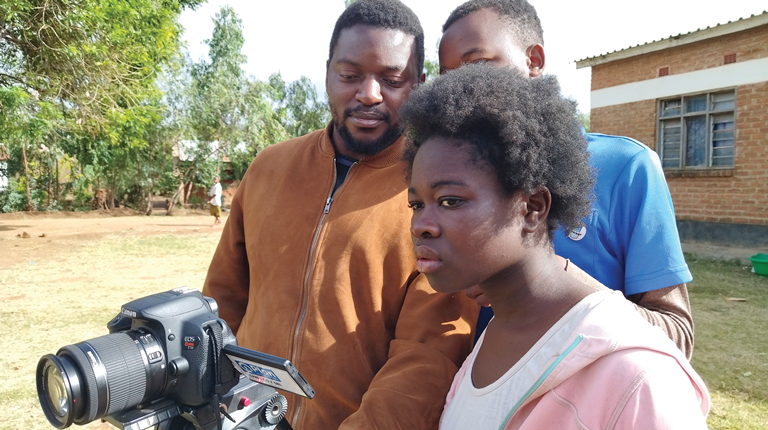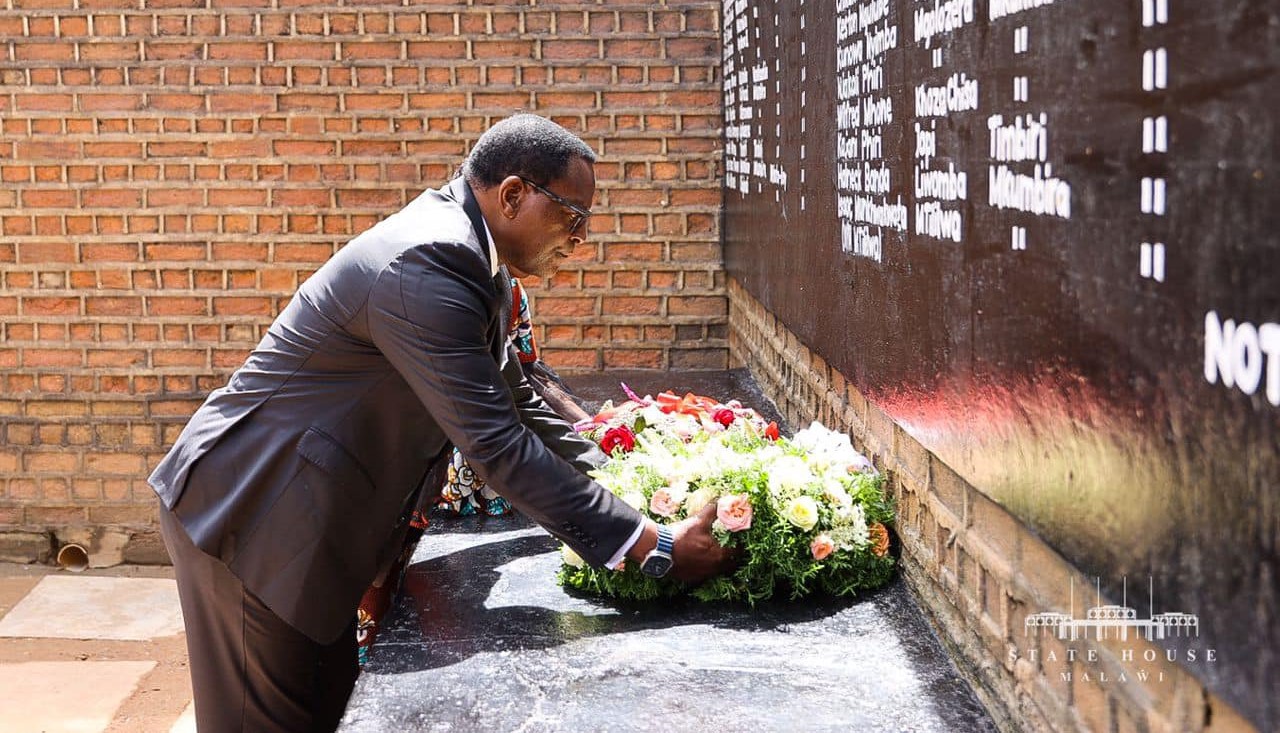Making films for development
At the foot of Michesi Mountain in Phalombe District, is Chiringa Trading Centrre. It is a place of hustle and bustle, as people of all ages try to make ends meet with various businesses.
Last week, a group of 10 youthful entrepreneurs left behind their hustle in the buzzing rural town to attend a one-week training in filmmaking. The training was spearheaded by the University of Malawi’s (Unima) Fine and Performing Arts Department.

Moses K alinde , from Ligwirigwidi Village, traditional authority (T/A) Nazombe, is a videographer and photographer without formal training in filmmaking.
“I decided to take part in the training to enrich my raw skills in videography,” he said at the end of the training.
Apart from Kalinde, all the other participants had no prior knowledge of filmmaking. Gloria Matiti, 17, said it was her first time operating a camera.
“I completely had no knowledge about videography. All I wanted was to learn how to operate a camera and venture into professional filmmaking when I complete my studies,” she said.
However, at the end of the training, all of them were able to produce video documentaries that tell their own stories.
The participants were trained in the whole process of filmmaking, from concept to execution. They were equipped with skills such as camera setting and operation, film shots, documentary script writing, footage collection, subject interviews, and editing.
After a gruelling week of hands-on training, the youthful participants were divided into two groups and commissioned to experiment with the skills by producing a documentary of their choice.
One group documented success stories of farmers at Kanjedza Irrigation Scheme in the area whereas the other group celebrated youthful e n t r e p r e n e u r s who a r e overcoming the prevailing socio-economic challenges.
“We know that most of the youth are struggling to find jobs or capital for business. But we wanted to show the other side of the coin that others are able to overcome these economic tribulations with hard work and resilience,” said Dyson Dabwa, 27, who directed the latter documentary.
Associate Professor of Drama at Unima, Mufunanji Magalasi, said the training is part of the university’s mandate to reach out to communities with skills and knowledge.
“This is important because as a university we generate knowledge and skills. And this has to be shared beyond the walls of the university,”
he said.
Magalasi said they decided to experiment with filmmaking with the community after noticing that film is a powerful tool in development.
“Film is a very interesting medium, especially film in development. This is because it is accessible to everyone at all levels.
“As you may be aware, there are issues of illiteracy in this country. Some six years ago, we were talking of 65 percent literacy, meaning that 35 percent of Malawians are still illiterate. When you use film as a medium, and also you use local languages, then you are able to communicate with images,” he said.
One of the facilitators of the training, Steve Kamponda, said film in development is used to give a voice to the voiceless, especially vulnerable groups like the youth, girls and women so that they are able to express themselves.
“It is used as a tool to facilitate dialogue, initiate a development process so that issues that were underground are brought to the surface by the people themselves,” said Kamponda, who is also a development communications specialist at Plan Malawi, and a master’s student at Unima.
He s a i d f i l m i n development is different f r o m c o m m e r c i a l f i l m m a k i n g . H e commercial filmmaking has real or imaginary stories for commercial purposes. But for film in development, the main idea is that the film has to be made by the people themselves.
“It’s the powerless people who create the story, the narrative and direct how that film has to come out. It’s more about empowering grassroots to use film as a tool to communicate development amongst themselves and to appeal to others,” he said.
Mufunanji agrees, saying that bringing in communities to make their own stories is a step in the right direction in terms of communicating development.
“When development started, or when we started talking about development, we looked at experts as people to deliver everything. In the end, we noticed that we were not reaching the people we intended to reach because our understanding of local issues is not t h e c ommu n i t i e s ’ understanding,” he said.
But are these projects sustainable when the communities may not have the cameras to keep on shooting videos?
“We try as much as possible to use equipment t h a t i s a c c e s s i b l e . Nowadays we are talking about mobile phones. So, communities can use these phones to collect video footage and audio to tell their stories. Development partners can also come in to support such initiatives with proper equipment,” said Kamponda.
For now, the youth at Chiringa on the foot of Michesi Mountain are telling stories that have been bottled up for ages–thanks to Unima’s participatory filmmaking initiative.






One Comment